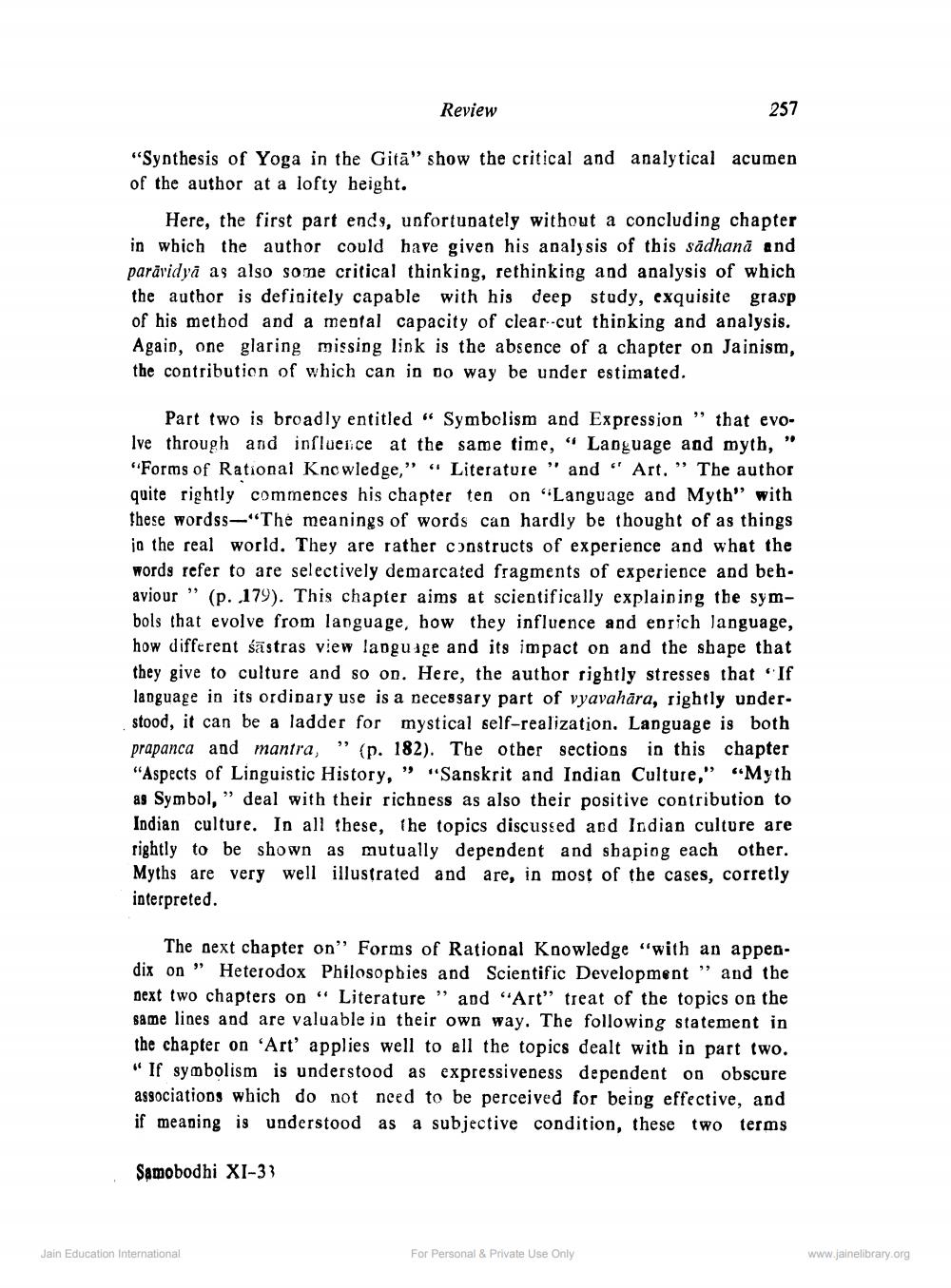________________
Review
257
"Synthesis of Yoga in the Gitā" show the critical and analytical acumen of the author at a lofty height.
Here, the first part ends, unfortunately without a concluding chapter in which the author could have given his analysis of this sādhanā and parāvidyā as also some critical thinking, rethinking and analysis of which the author is definitely capable with his deep study, exquisite grasp of his method and a mental capacity of clear-cut thinking and analysis. Again, one glaring missing link is the absence of a chapter on Jainism, the contribution of which can in no way be under estimated.
Part two is broadly entitled “ Symbolism and Expression " that evoIve through and influence at the same time, " Language and myth," "Forms of Rational Knowledge,” “ Literature " and " Art, " The author quite rightly commences his chapter ten on "Language and Myth" with these wordss—"The meanings of words can hardly be thought of as things in the real world. They are rather constructs of experience and what the words refer to are selectively demarcated fragments of experience and beh. aviour” (p. 179). This chapter aims at scientifically explaining the symbols that evolve from language, how they influence and enrich language, how different śāstras view language and its impact on and the shape that they give to culture and so on. Here, the author rightly stresses that If language in its ordinary use is a necessary part of vyavahāra, rightly under. stood, it can be a ladder for mystical self-realization. Language is both prapanca and mantra, ” (p. 182). The other sections in this chapter "Aspects of Linguistic History, " "Sanskrit and Indian Culture," "Myth as Symbol, ” deal with their richness as also their positive contribution to Indian culture. In all these, the topics discussed and Indian culture are rightly to be shown as mutually dependent and shaping each other. Myths are very well illustrated and are, in most of the cases, corretly interpreted.
The next chapter on" Forms of Ratiopal Knowledge "with an appendix on " Heterodox Philosopbies and Scientific Development” and the next two chapters on “ Literature " and "Art" treat of the topics on the same lines and are valuable in their own way. The following statement in the chapter on 'Art' applies well to all the topics dealt with in part two. "If symbolism is understood as expressiveness dependent on obscure associations which do not need to be perceived for being effective, and if meaning is understood as a subjective condition, these two terms
Samobodhi XI-33
Jain Education International
For Personal & Private Use Only
www.jainelibrary.org




